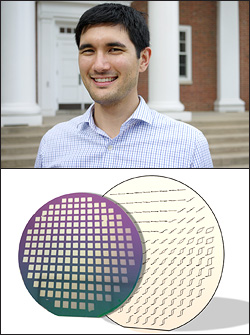Searching for Replacements for Rare Earth Elements in Permanent Magnets
For millennia, magnetism has enabled revolutionary technologies like the compass, electric generators and motors, and hard drives and credit cards for digital media and commerce. Since the 1980s, neodymium and dysprosium have been used in alloys to create the most compact and powerful magnets, making our mobile media lifestyle possible. Neodymium and dysprosium, known as rare earth elements, are part of a group of elements the U.S. government has classified as “critical materials”1 due to their importance to civilian and military applications and their failure to meet demands for supply. Despite the name, they are relatively abundant. However, 95% of the world’s supply is obtained from China, raising concerns about future availability and cost. Mining and refining rare earth elements also requires toxic chemicals, produces radioactive waste, and is detrimental to the environment. Unfortunately, no comparable materials exist, leaving thousands of products reliant on neodymium, dysprosium, and other rare earth elements. At the University of Maryland, Department of Materials Science and Engineering (MSE) graduate student Sean Fackler is searching for alternatives to permanent magnets made with rare earth elements. His recent work, which demonstrates how to quickly and efficiently discover new magnets and reinvent less successful ones, received the 2014 Rare Earth Permanent Magnet workshop poster award, the 2014 NanoDay entrepreneurship award, and a Center for Nanophysics and Advanced Materials talk award. Alloys of iron and cobalt are well known for their magnetic properties. Typically, in order to improve their strength and machinability, a third element is added. Vicalloy, the subject of Fackler’s study, is a permanent magnet made of iron, cobalt and vanadium. The material has been studied and used since the 1940s, but interest in it has waned in favor of magnets containing rare earth elements, which are up to 20 times stronger. Fackler’s experiments show that with some reworking, vicalloy’s properties can be enhanced. Fackler, a member of MSE professor and Maryland NanoCenter member Ichiro Takeuchi’s research group, was able to assess vicalloy’s potential in minute detail using a technique that was unavailable to its creators in the 1940s and 1950s: combinatorial materials synthesis, also known as “combi.” Combi allows Fackler and Takeuchi to quickly create and screen hundreds of unique materials samples of varying compositions to determine which, if any, have the properties they’re looking for. The process is like spray-painting a triangular panel with three different colors, each one starting out at a different corner. As the paints cross paths, they create a gradual change in color across the triangle’s surface, allowing the artist to quickly identify the mixtures that result in the most beautiful hues. In this case, iron, cobalt and vanadium were the spray paints, in the form of thin film deposits on a three-inch silicon wafer. It was in this “combinatorial library” of vicalloys that Fackler discovered one of them was a much stronger magnet. 1 For example, see: Department of Energy, “Critical Materials Strategy.” December 2010. Retrieved online 15 October 2014 from energy.gov/sites/prod/files/edg/news/documents/criticalmaterialsstrategy.pdf
Related Articles: October 23, 2014 Prev Next |


